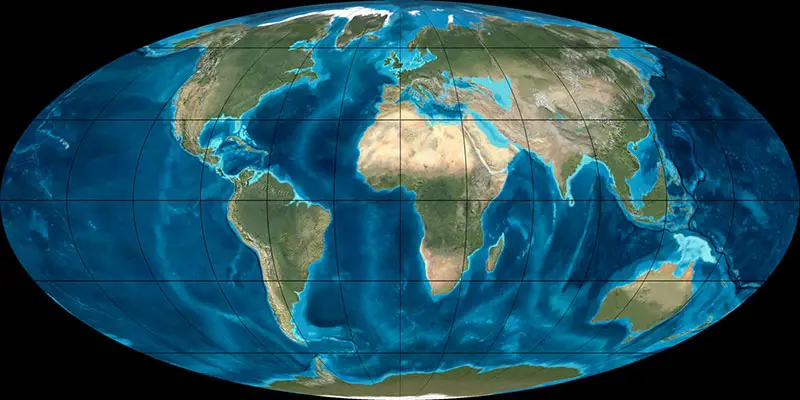†Homunculus (Homunculidae)
Homunculus ist eine Primatengattung innerhalb der Familie Homunculidae, deren 3 Mitglieder ab dem frühen Neogen (Miozän) im Aquitanium lebten, das vor ungefähr 23 Millionen Jahren begann und bis vor 20,4 Millionen Jahren andauerte. Viele Überreste wurden in Argentinien gefunden.
| Physiologie | |
|---|---|
| Gewicht: | ? |
| Schwestertaxa | |
Literatur
A. A. Tauber 1997, Bioestratigrafía de la Formación Santa Cruz (Mioceno Inferior) en el extremo sudeste de la Patagonia. Ameghiniana. 34:4, p. 517 - 529M. F. Tejedor, A. A. Tauber, A. L. Rosenberger, C. C. Swisher III, M. E. Palacios 2006, New primate genus from the Miocene of Argentina. Proceedings of the National Academy of Sciences. 103:4, p. 5437 - 5441
R. F. Kay, J. M. G. Perry, M. Malinzak, K. L. Allen, E. C. Kirk, J. M. Plavcan, J. G. Fleagle 2012, Paleobiology of Santacrucian primates. Early Miocene Paleobiology in Patagonia: High-Latitude Paleocommunities of the Santa Cruz Formation. :4, p. 306 - 330
R. F. Kay, S. F. Vizcaíno, M. S. Bargo 2012, A review of the paleoenvironment and paleoecology of the Miocene Santa Cruz Formation. Early Miocene Paleobiology in Patagonia: High-Latitude Paleocommunities of the Santa Cruz Formation. :4, p. 331 - 365
J. M. Perry, R. F. Kay, S. F. Vizcaíno, M. S. Bargo 2014, Oldest known cranium of a juvenile New World monkey (Early Miocene, Patagonia, Argentina): Implications for the taxonomy and the molar eruption pattern of early platyrrhines. Journal of Human Evolution. 74:4, p. 67 - 81, DOI: 10.1016/j.jhevol.2014.03.009
N. M. Novo, M. F. Tejedor, L. R. González-Ruiz 2018, Previously unknown fossil platyrrhines (Primates) of Patagonia from the Tournouër collection at the Muséum national d'Histoire naturelle, Paris. Geodiversitas. 40:22, p. 529 - 535, DOI: 10.5252/geodiversitas2018v40a22
R. F. Kay, J. M. G. Perry, L. R. González-Ruiz 2019, New Primates From the Río Santa Cruz and Río Bote (Early-Middle Miocene), Santa Cruz Province, Argentina. Publicación Electrónica de la Asociación Paleontológica Argentina. 19:2, p. 230 - 238, DOI: 10.5710/PEAPA.24.08.2019.289
